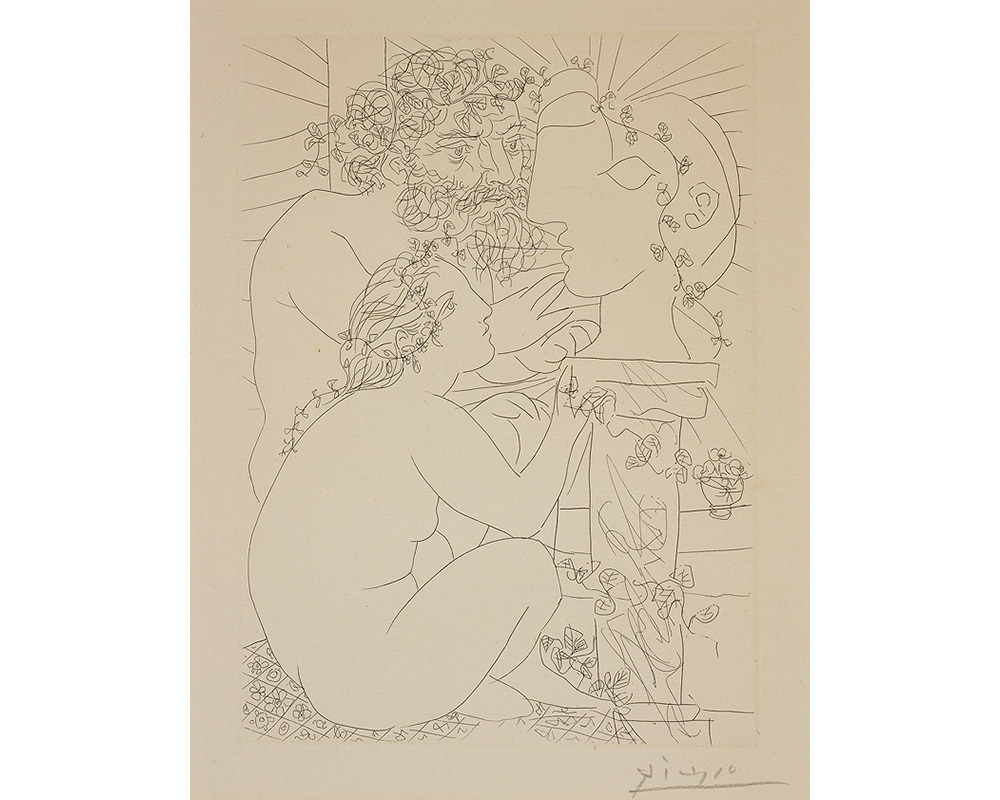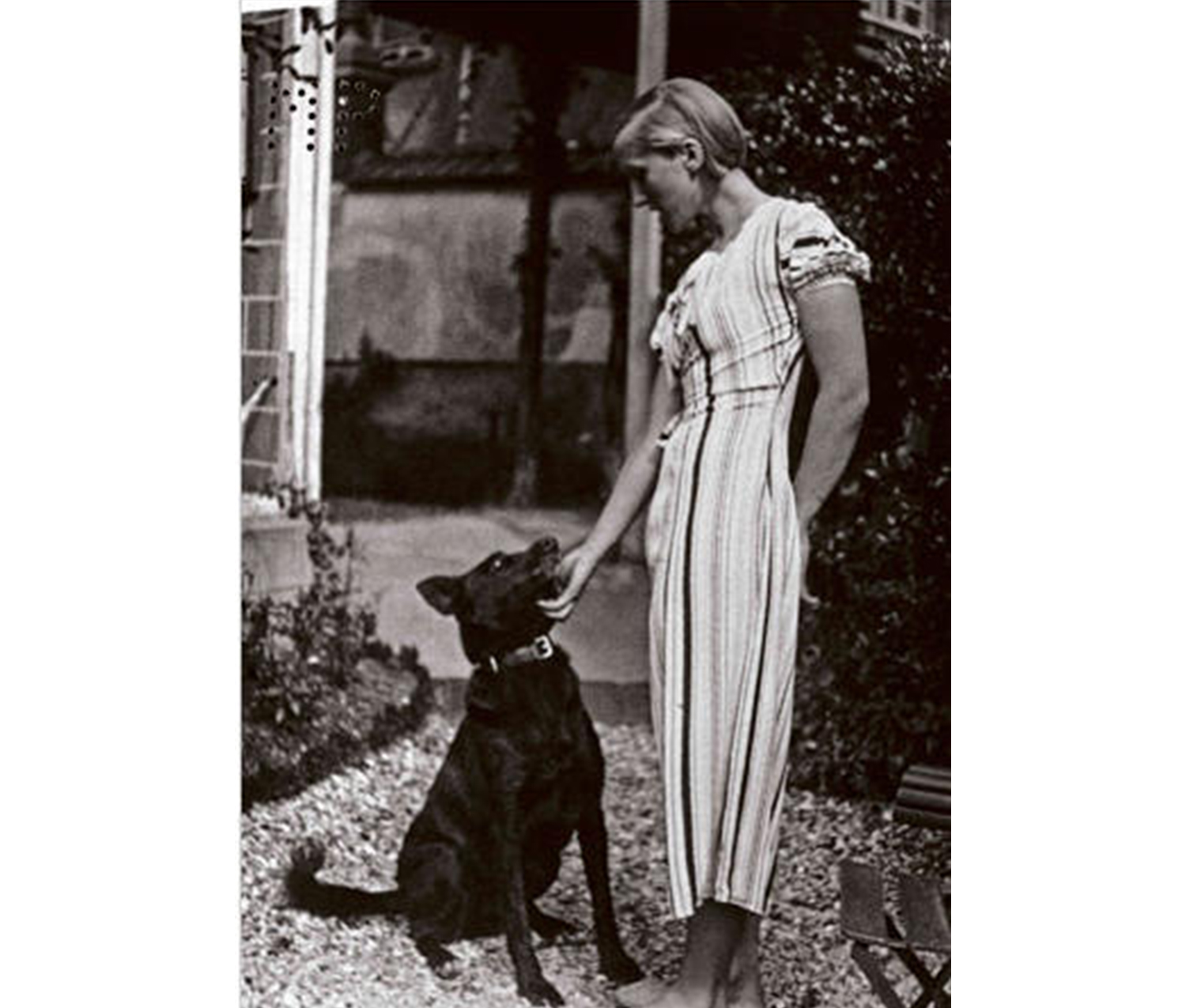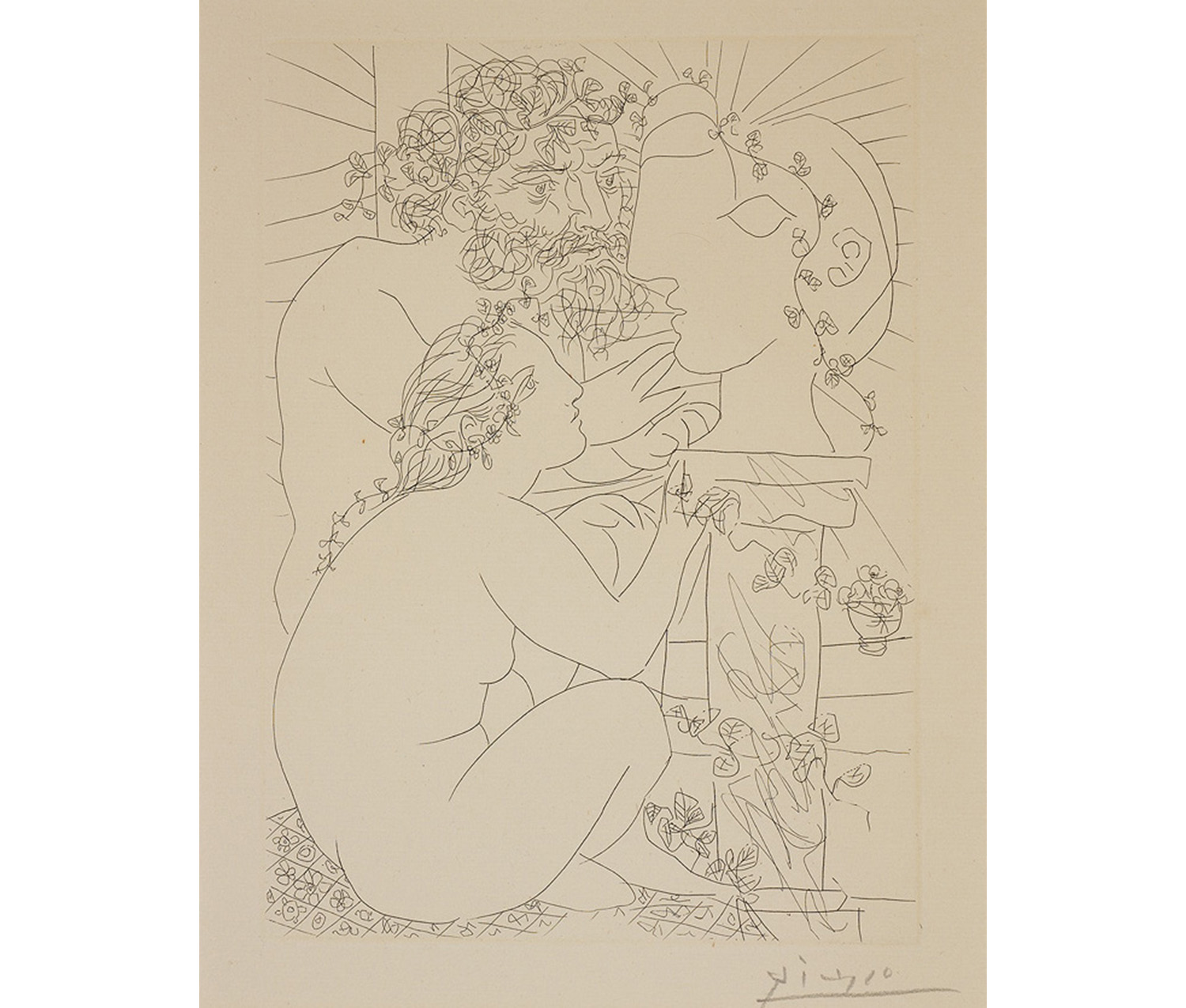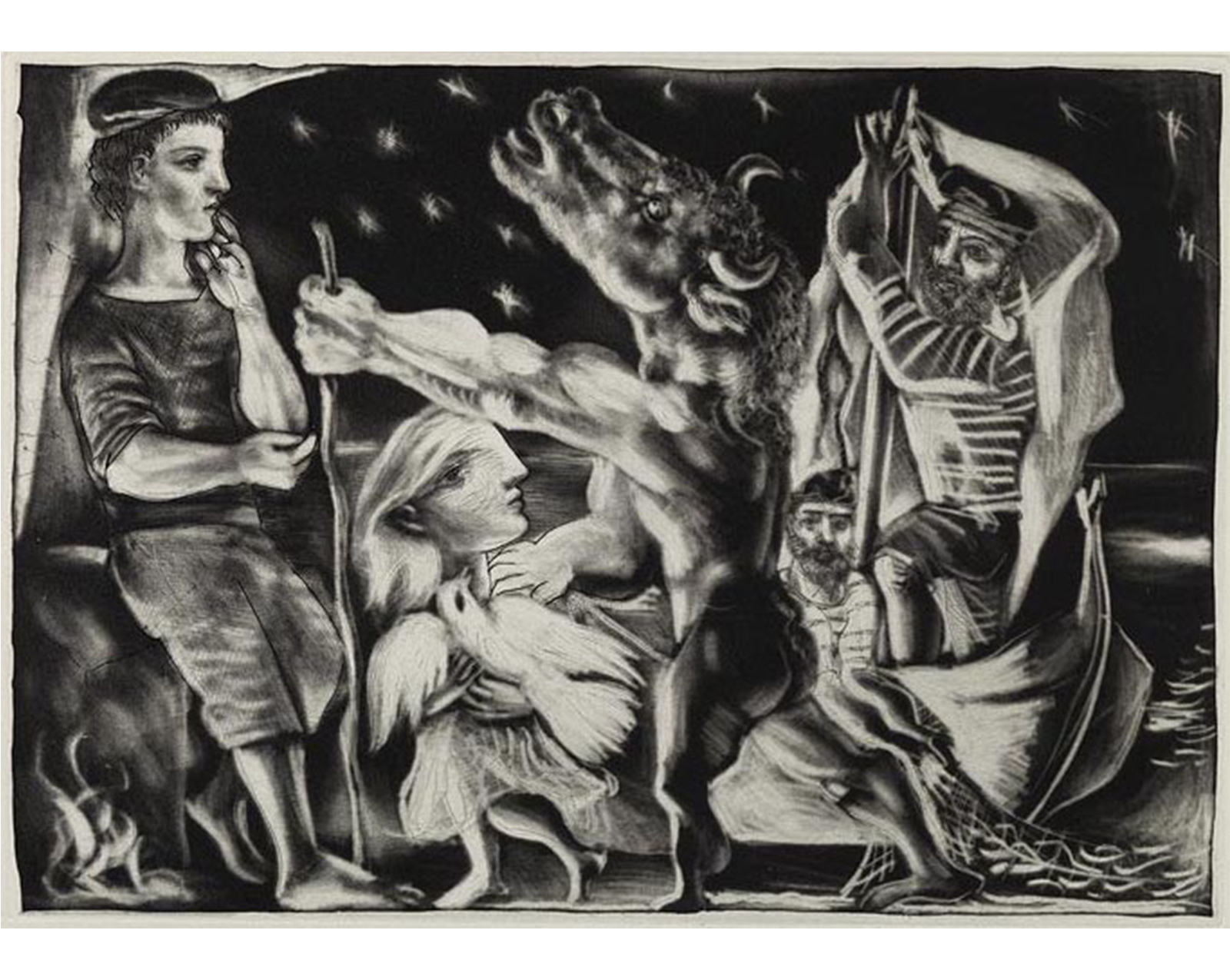
Picasso and His Muse
Guest blogger Jenny Duckett '14 was a Smith College student, class of 2014, with a major in Art History. She was a Student Assistant in the Cunningham Center for the Study of Prints, Drawings, and Photographs.

A picture of Marie-Thérèse from Gérard Blot/Réunion de Musées Nationaux/Art Resource, NY, Acquavella Gallerie, via Picasso in Lust and Ambition.
As a student assistant in the Cunningham Center, one of my main duties is to pull prints, drawings, and photographs from the Smith’s collection for class visits and individual study. A few weeks ago I stumbled upon some prints by Picasso which piqued my interest. At the time I was just beginning my research for a paper I am writing about Picasso. The topic of my paper is Marie-Thérèse Walter, one of Picasso’s many mistresses, who is an incredibly strong presence in his work during their eight year relationship. I was lucky enough to find two prints in the collection which contain her unmistakable profile, and I immediately began research in order to include them in my paper.
Marie-Thérèse met Picasso in the winter of 1927 outside of a department store when she was just 17. Picasso, who was married and 45 at the time, approached Marie-Thérèse and boldly stated, “Hello, I’m Picasso. We are going to great things together.” Although Marie-Thérèse had no idea who this strange man was, she agreed to meet him the following Monday at the St. Lazare metro station. The rest is history. Their affair lasted roughly eight years and during that time Marie-Thérèse served as Picasso’s muse, appearing in painting after painting in endless incarnations; as a still life of fruit, a voluptuous woman asleep in an armchair, a Greek goddess, or an innocent child. Although Picasso had many women in his life, Marie-Thérèse is undoubtedly the most frequently represented woman in his artwork.

Picasso, Pablo. Spanish, 1881–1973. Printed by Roger Lacourière. Sculpteur, modèle accroupi et tête sculptee (Sculptor, Model Crouching and Sculpted Head); from the Vollard Suite, 1933. Etching on cream Montval laid paper with Vollard watermark. Bequest of Josephine A. Stein, class of 1927. SC 1997.16.2.
The first work that I looked at from Smith’s collection was an etching from the Vollard Suite, featuring a Greek sculptor and his model gazing up at his sculpture; a large sculpted head with Marie-Thérèse’s profile. At the time this print was created, Picasso had just purchased the Chateau de Boisgeloup, an hour outside of Paris, as a summer hideaway for himself and his mistress, using its stables as a sculpture studio. It was there that he sculpted monumental busts of Marie-Thérèse.
Picasso liked to envision himself as a Greek sculptor like Polyclitus or Praxiteles, imagining Marie-Thérèse as a goddess that he was sculpting. In this etching Picasso pictures himself as the bearded sculptor, admiring his masterpiece. One can observe the jutting out from behind the bust, almost as if they are rays of light springing forth from the sun.
The second piece that I chose to study is a print wherein Picasso depicts himself as a blinded minotaur while a small girl holding a dove leads him by the hand. While there are multiple theories by art historians regarding the meaning of this print, I prefer to think that Marie-Thérèse is bringing Picasso solace or peace, represented by the dove, while she guides him out of the darkness.

Picasso, Pablo. Spanish, 1881–1973. Minotaure Aveugle Guide par une Fillette dans la Nuit, 1934. Acquatint, scraper, drypoint and burin printed in black on Montual paper. Gift of Susan S. Small (Susan Spencer, class of 1948). SC 2009.14.
At this time in Picasso’s life he was coping with a painful divorce form his current wife, Olga, and Marie-Thérèse served largely as a respite from this daily stress. What is interesting to note is that soon after the creation of this print, in 1935 Picasso abandoned her for the photographer Dora Maar, leaving Marie-Thérèse heartbroken with a young daughter to care for. Picasso ultimately ended their relationship because Marie-Thérèse could not compete with him intellectually. In his mind she was still the young girl outside the department store, eternally innocent and naïve. Perhaps this is why he chose to represent her as a young girl in this print, instead of a woman. Although Picasso had progressed over the course of their relationship, Marie-Thérèse had not, and the qualities for which he had originally loved her became the reason for their relationship's demise.
Marie-Thérèse never married, spending the rest of her days raising their daughter Maya and quietly loving Picasso from afar. Like many of his lovers, Marie-Thérèse never fully recovered from their relationship, ultimately committing suicide in 1977, four years after Picasso’s death. Picasso’s love life is a fascinating subject, filled with more scandal and drama than any soap opera on television today. Marie-Thérèse Walter played an integral role in this story, as well as in Picasso’s artwork, and I have greatly enjoyed having the opportunity to study images of her in person.